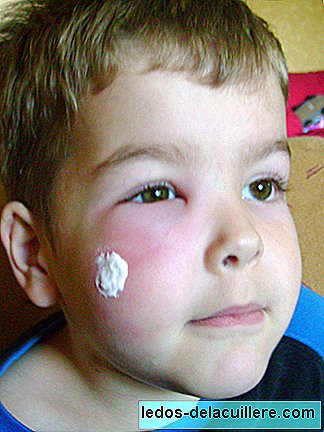
When the temperatures start to rise we all get very happy because our holidays are about to arrive and we will have plenty of free time ... at least in the Northern Hemisphere.
Close your eyes and tell me what you associate heat with? Ice cream, swimming pool, excursions, summer movies, trips ...? maybe insects?. Yes, indeed, because except for some we can find at any time of the year, these animals also love the warmth.
Thus we will find an increase in the populations of ants, ladybugs, beetles, etc. and with it an opportunity for children to study their habits. But not all are beneficial because we can suffer bites, especially from mosquitoes and ticks (which can transmit serious diseases). That is why we have dedicated this article to prevention. To prevent bites, both of mosquitoes and ticks, we can dress our children with long clothes, covering a large part of the body, and closed shoes, and avoid grass fields that are found at the edges of the forests. To more easily identify ticks, it is helpful to dress in light colors.
We can also avoid contacting our children with mosquitoes if we do not wear brightly colored clothing, and we do not stay long near dammed waters.
Catherine Lachenauer, director of the Division of Patients with Infectious Diseases at Boston Children's Hospital (USA), states that, in order to avoid insect bites, the most important thing is to take the necessary precautions in advance
There are few insects that I don't like, but of course I hate mosquitoes and ticks (along with fleas and cockroaches). It is true that mosquito bites are annoying, but that's little compared to the possibility of transmitting diseases. Hence the importance of prevention: it is important to know that mosquitoes frequent humid and wooded areas, and are more active during sunrise and sunset.
Repellents are also recommended to protect our children, although it is not advisable to use those that contain the ingredient known as DEET in less than two months, nor apply them directly to the child's skin; we spray it first on our hands, and then spread it over the child's body, avoiding the mouth and eyes
As for ticks, It is essential to know how to identify and extract them, in case they attack our children. The greatest danger lies in the so-called deer ticks, since they transmit Lyme disease, an infection that can affect the skin, joints, nervous system, and some human organs.
Deer ticks can be identified by their color: females are usually reddish or orange with a brown spot, while males are completely brown. In addition, it takes about 36 hours to transmit the Lyme germ, and therefore, if you live in an area with the presence of these insects , parents can prevent the disease by checking their children's bodies every day for them, especially the parts with skin folds such as the armpits and neck.
In case a tick attached to the body is detected, you have to extract it quickly. The insect must be grasped with tweezers, always as close to the skin as possible, and must be pulled up at a constant rate, never abruptly, since the tick can split and its mouth can remain inside the skin. Then, simply clean the area of the bite with soap and water, wash your hands, and check the area the following days.
So you know: to prevent the transmission of diseases by insect bites, the best medicine is prevention, without a doubt.












